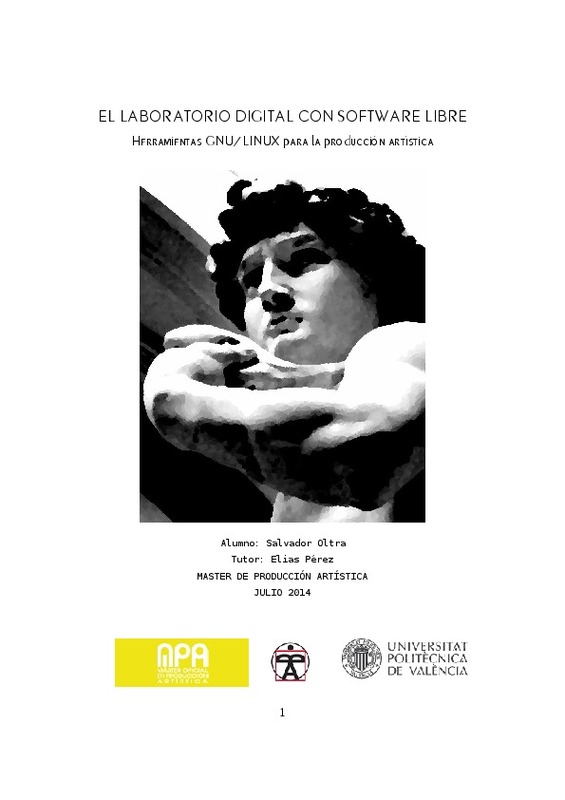|
Resumen:
|
The use of technologies derived from IT are prevelant in all the fine art disciplines and have become essential for many of them. This technological revolution began when the PC reached a level of sophistication enabling ...[+]
The use of technologies derived from IT are prevelant in all the fine art disciplines and have become essential for many of them. This technological revolution began when the PC reached a level of sophistication enabling it to display graphics on a screen rather than just numbers and letters.
From the perspective of artistic production the principal traditional disciplines that use these technologies are drawing, design, technical drawing (2D and 3D), photography and video. Excellent programmes are available for all of them and can achieve amazing results that would have been impossible only 20 years ago.
Any computer can currently do any of these tasks, although the cost of the necessary software is often higher than the cost of the hardware.
We believe that using software should be free, as a fundamental right, just the same as using a pencil or any sort of knowledge based tools.And not just for an artist. Any obstacle or barrier to it's use directly relates to the right of education or to the freedom of expression.
An alternative option to commercial software has existed for a number of years. It is the free software (GNU/Linux). It is called open code software, as it can be modified by any user. It is developed in a social collaborative way and its use and distribution is also free.
For that reason, our main goal here is to provide a clear vision of the applications and distributions of free software for artistic creation, to review its features and make proposals for artistic work within the reach of any user without the need of very specific IT knowledge.
[-]
La utilización de las tecnologías derivadas de la informática ha penetrado en todas las disciplinas de las bellas artes, llegando a ser actualmente imprescindible en muchas de ellas. Este devenir de la evolución técnica ...[+]
La utilización de las tecnologías derivadas de la informática ha penetrado en todas las disciplinas de las bellas artes, llegando a ser actualmente imprescindible en muchas de ellas. Este devenir de la evolución técnica comenzó tiempo atrás cuando aquel revolucionario invento, el ordenador personal (PC) aprendió a dibujar, es decir, a presentar gráficos en una pantalla y no sólo números y letras.
Desde la perspectiva de la producción artística, las principales disciplinas tradicionales donde es útil esta tecnología son el dibujo, el diseño, el dibujo técnico (2D y 3D), la fotografía y el vídeo. Para todo ello existen programas comerciales estupendos, con los que se puede conseguir resultados sorprendentes e impensables hace 20 años. Cualquier PC actual es capaz de llevar a cabo estas tareas, sin embargo el coste de los programas profesionales es muy elevado, puede superar fácilmente al del hardware necesario.
Entendemos que el uso de éstas tecnologías es un derecho fundamental, como el de un lápiz o cualquier tipo de conocimiento. Y no sólo para un artista. Cualquier obstáculo o barrera en su acceso entronca directamente con el derecho a la educación o la libertad de expresión.
Desde hace años existe una alternativa al software comercial, que es el software libre (GNU/linux). Se define esencialmente como programas de código abierto (que cualquier usuario puede modificar) se desarrolla de forma colaborativa, y se puede utilizar y distribuir libremente.
Por ello nuestro objetivo principal es dar una visión clara de las aplicaciones y distribuciones de software libre eficientes para la producción artística, revisar sus características y realizar una propuesta de configuración de un entorno de trabajo en producción artística con software libre, utilizable por cualquier usuario, sin necesidad de grandes conocimientos informáticos.
[-]
|







